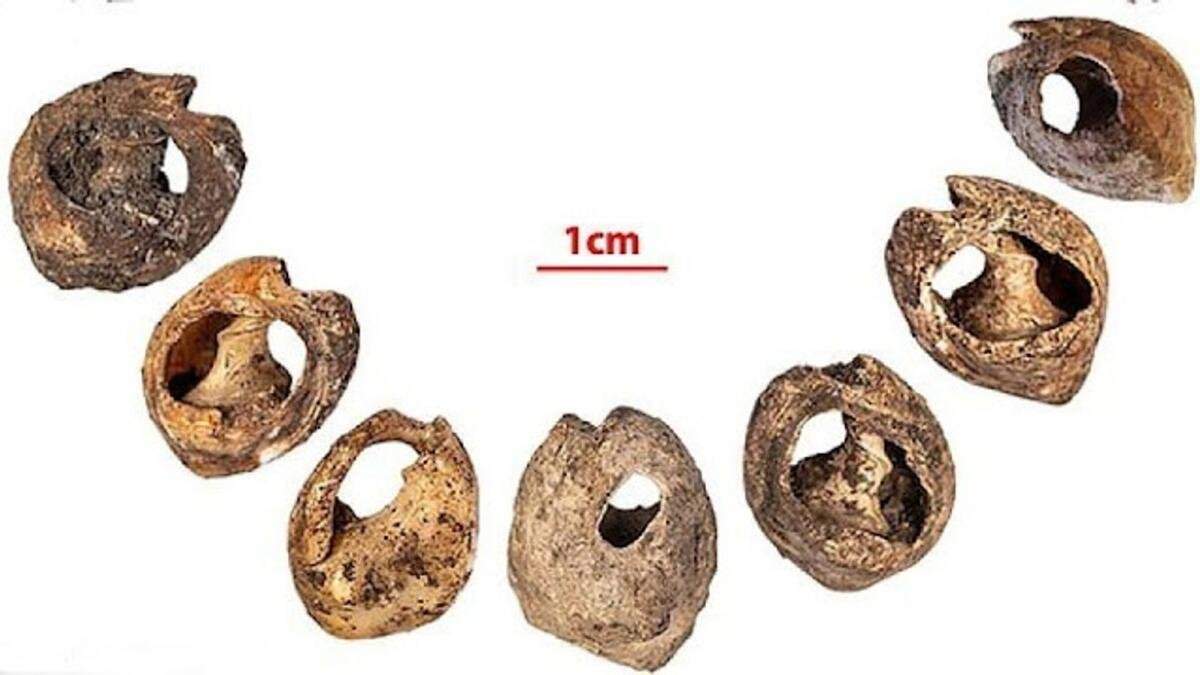In Morocco, what archaeologists now believe to be the oldest jewels in the world, a set of perforated shells dated to between 142 and 150 thousand years ago, have been discovered in the Bizmoune frotta, about 15 kilometers east of the coastal city of Essaouira in the center of the country. The discovery dates back to the excavation carried out in the cave between 2014 and 2018, but the discovery was only made public in recent days, following a publication in the scientific journal Science Advances. The team that led the discovery is led by Steven L. Kuhn of the University of Arizona, Abdeljalil Bouzouggar of the National Institute of Science and Heritage in Rabat, and Philippe Fernandez of Aix-Marseille University.
“Ornaments such as shells,” reads theabstract of the scientific article, which bears the signatures of twenty-six scholars of different nationalities and academic affiliations, “are among the earliest signs of symbolic behavior among humans. Their appearance signals important developments in both cognition and social relationships.” Many of the shells, it goes on to say, "come from deposits dating back more than 142,000 years, making them the oldest ornaments made from shells ever recovered. [...]. The age and ubiquity of shells at Middle Stone Age (MSA) sites in North Africa provide further evidence for the potential importance of these artifacts as identity markers. The early and continued use of Tritia gibbosula and other materials also suggests a remarkable degree of cultural continuity among early Homo sapiens groups throughout North Africa."
These jewels are, according to archaeologists, the earliest known evidence of a form of nonverbal communication among humans and shed new light on how our cognitive abilities and social interactions evolved. Jewelry like these were likely part of the way our ancestors expressed their identity through clothing, and they show that even hundreds of thousands of years ago humans communicated with larger groups than their family members and friends.
There are 33 perforated shells, and they had been pierced to allow a thread to pass through or to be attached to clothing. This is a very important discovery because, according to anthropologists who study the evolution of human communication, they are one of the earliest forms of nonverbal communication.The significance of the discovery is remarkable considering that humans began using writing much later. “We don’t know what they meant,” Kuhn pointed out, “but they are clearly symbolic objects, which were arranged in such a way that other people could see them.” The choice to use shells over other forms of communication (such as body or face painting done with earth or charcoal) according to Kuhn stems from the fact that humans had achieved an awareness that they wanted to communicate in a more lasting and important way.
Now archaeologists are trying to understand why this form of communication developed. Several explanations are under consideration: perhaps because they were the product of a growing population whose members needed to identify themselves. Or to communicate at a time when the climate had become harsher, and thus obviating the need to have to expose the body. Again, it may have arisen as part of the development of clans or alliances to protect limited resources, so shell jewelry could have been used to communicate membership. In short: these are objects that now raise more questions than they can answer.
 |
| Morocco, jewelry made of shells discovered: believed to be the oldest in the world |
Warning: the translation into English of the original Italian article was created using automatic tools. We undertake to review all articles, but we do not guarantee the total absence of inaccuracies in the translation due to the program. You can find the original by clicking on the ITA button. If you find any mistake,please contact us.